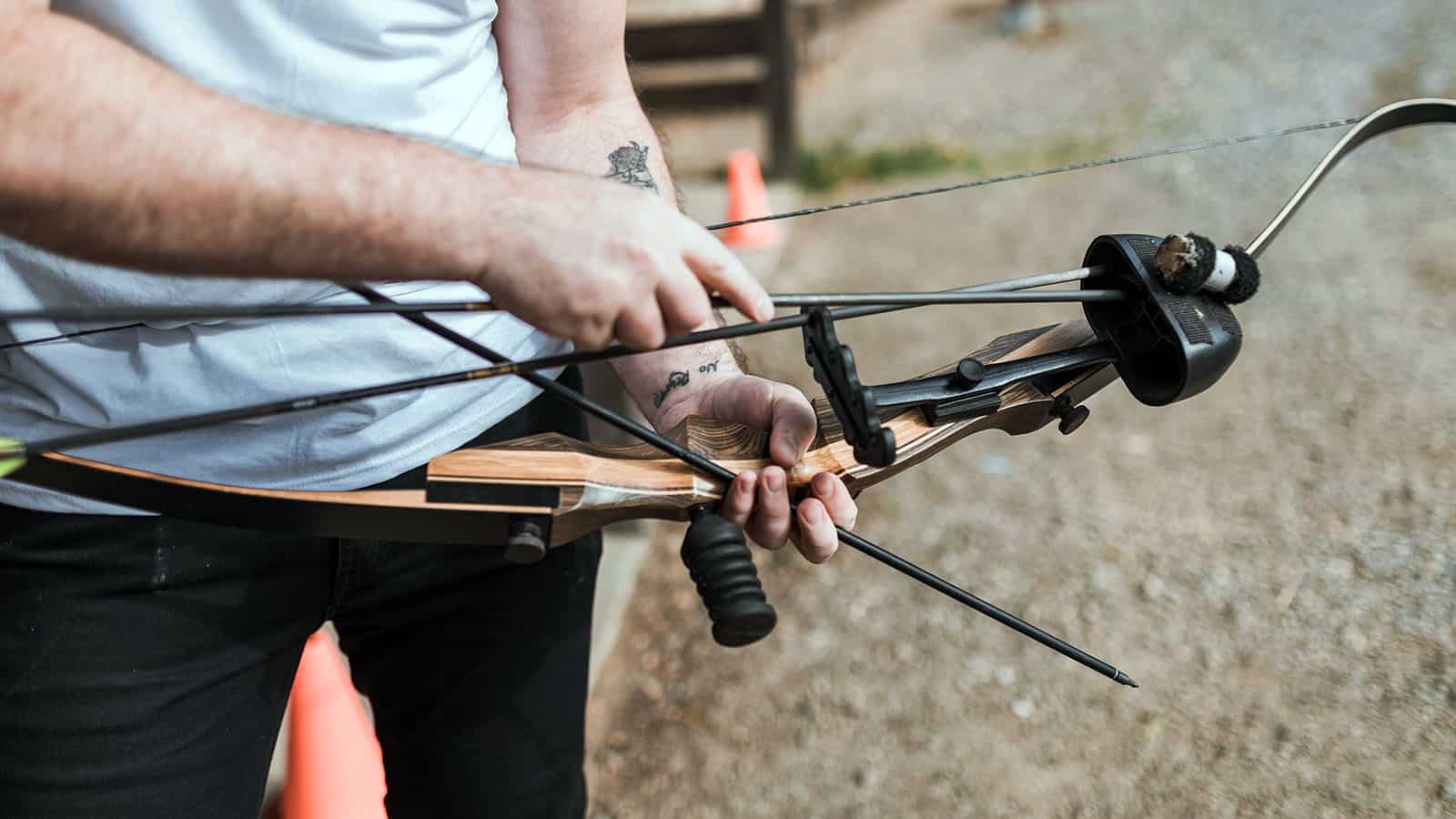If you are planning on going bow hunting, the length of your arrows is very important. The length of your arrows is determined by your draw length and the type of bow you have. Your arrow length then also determines how easy or hard it is to use the bow in question.
Arrow length is also important in terms of aerodynamics. Using the wrong arrow length can have disastrous consequences for your hunting journey. Therefore, how to determine arrow length is one of the first things that you should learn before you start bow hunting.
Today, we will figure out how to determine arrow length. However, we will also cover many other important parts. We will talk about what the correct and standard arrow length is. We will also compare draw length and arrow length. Right now, you are going to learn everything there is to know about the proper arrow length and why it matters.
How to Measure Arrow Length – Taking the Measurements
The very first thing you need to learn here is how to measure arrow length. This is very easily done. The easiest way to measure your arrow is to measure from the back of the point all the way to the throat of the nock (where the string sits).
Make sure to measure only to the throat of the nock, and not to the very end of the arrow. Also, remember not to measure the arrow from the front of the tip or arrowhead, but rather from the rear of the arrowhead, where it attaches to the shaft of the arrow.
What is a Standard Arrow Length?
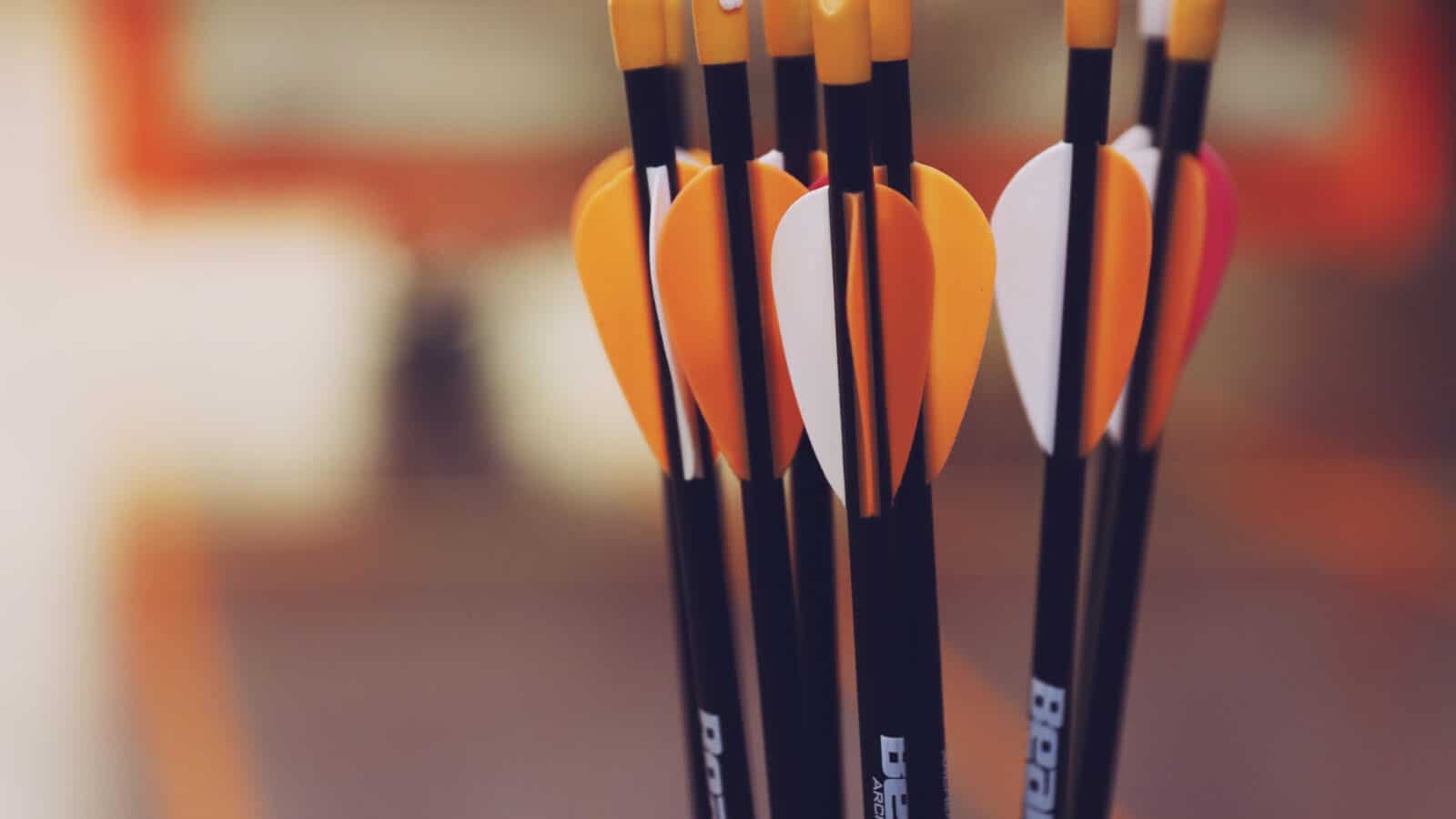
Historically speaking, arrows have ranged anywhere between 18 inches and six feet in length. Of course, 6 feet is probably a little too long for you. As far as standard recurve bows, longbows, and compound bows are concerned, these arrows are a little shorter. Standard arrow length tends to be between 22 inches and 32 inches long.
The minimum size of the arrow is very important. If the arrow is too small, it will be shorter than your draw length. If the arrow is shorter than you’re drawing, you won’t be able to fully extend your arms. This therefore means that your arrow won’t have as much power behind it as possible.
Furthermore, it is also unsafe for the arrow to be shorter than your draw length. It may come off the shaft of your bow, and then misfire when you release the string. This can lead to injury or worse.
However, being too long is not ideal either. If the air is too long, it can make your bow hard to maneuver and difficult to use. This is especially the case in tight conditions. If you are hunting in the woods, having an arrow that is not maneuverable is not ideal.
What is the Correct Arrow Length?
If we are talking about the correct arrow length, this will usually be no shorter than the middle of the riser of your bow. The correct arrow length is quite easy to determine. When your bow is fully drawn, the arrow should sit in the middle of the shelf.
When the bow is fully drawn, the tip of the arrow should be extremely close to the center of the shelf. The arrow should not extend very far beyond the end of the shelf.
The correct arrow length is long enough so that you can fully draw the bow without the arrow coming off of the shelf. However, the correct arrow length is also short enough so that the arrowhead doesn’t extend far past the bow when fully drawn.
Of course, what the correct arrow length for you is will depend on a variety of factors. The main factor here is your draw length. It also depends on whether you are going for accuracy and power or more for safety.
Draw Length vs Arrow Length
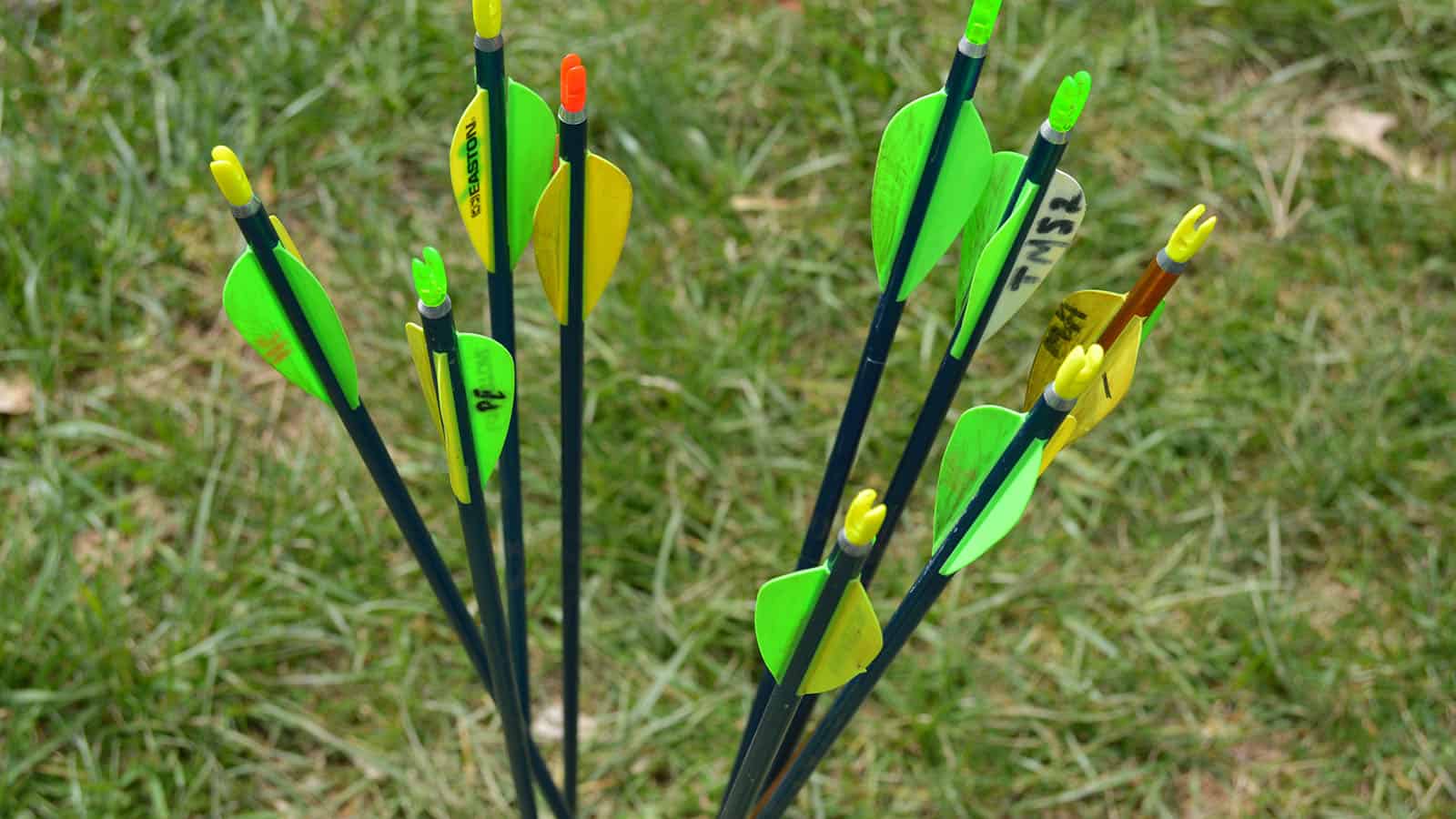
The difference between draw length and arrow length is important to know. This is because the draw length you have does in part determine what your required arrow length is. Therefore, you first need to know what draw length is, and how to measure it. Knowing what your draw length is will then allow you to determine the required arrow length for you.
Why Does Arrow Length Matter?
The length of your arrow matters for a few different reasons. First and foremost, the shorter an arrow is, the stiffer it will be. If you have a very short and stiff arrow, it will fly much faster. If it is shorter and stiffer, it is much lighter.
A lighter arrow flies faster than a heavier arrow. Furthermore, this also allows for greater flight speed and accuracy. The higher the flight speed, the more of an impact and penetrating power that arrow will have. If your arrow is short and stiff, it will not bend or flex much during flight.
The less an arrow bends or flexes during flight, the straighter the path of the flight will be. Therefore, technically speaking, shorter arrows are much better. The shorter your arrow is, the more accurate and faster it will fly. You’ll have a better chance at hitting long distance targets with shorter arrows.
The longer an arrow is, the slower it flies and the less accurate it is. However, the tradeoff here is safety. If an arrow is too short, it can be very dangerous. It may come off of the shelf when you draw the arrow. This may result in the arrow flying in an unwanted direction. In some cases, it has resulted in people shooting themselves through the hand. Therefore, as you can see, the proper arrow length matters a whole lot.
What Size Arrows Do I Need?
Generally speaking, there is one easy way to know what size arrows you need. The rule of thumb here is that you take your draw length and then add one inch to it. Therefore, if you have a 28-inch draw length, your arrow should be 29 inches long.
This will allow you to fully draw the string of your bow so that your arms are fully extended. It allows you to fully extend your draw, while ensuring that the arrow remains securely on the shelf. As you can see, determining your draw length is therefore the first step required here.
How to Determine the Correct Arrow Length for You
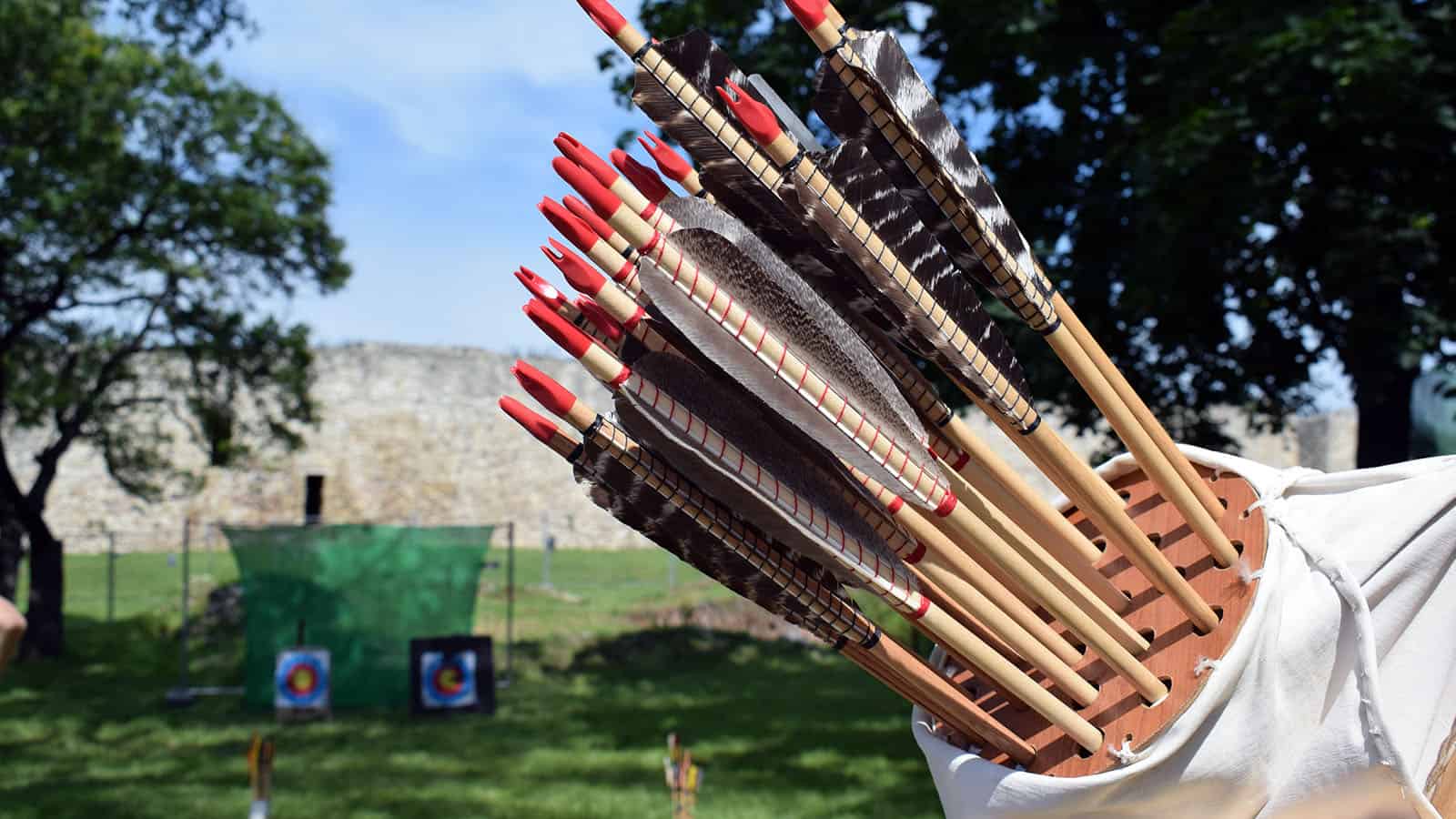
The best way to determine the correct arrow length is by first determining your draw length. There are four main ways to determine your draw length.
Measuring Your Arm
The first way to measure your drawing is to measure your own arms. To do this, stand up and stretch your arms so that your palms are together and your fingertips are fully extended. You need someone to measure the length of your arms from your chest to the end of your fingertips. You then want to add 1 inch to this measurement. If you don’t have someone to help you, hold a broomstick against your chest so that it is parallel to your arms. You can then measure how far up the broomstick your arms go.
Having a Friend Measure Your Draw Length
The next way to measure your draw length is to have a friend measure it for you. This requires you to have a bow on hand. Hold your bow using the correct form and fully draw it. You can then have a friend measure the length from the string or nock point to the front of the riser on the bow. You can then add half an inch to that. This will be the length of your arrow.
Using a Draw Arrow
A draw arrow is a special kind of extremely long arrow. It has measurements on it, and is designed for the purpose of measuring your draw length. Simply take this draw arrow, draw it, and take note of the measurement.
Use an Arrow Length Calculator
If you are having trouble determining your draw length, you can always use a draw length calculator. A draw length calculator requires you to enter your so-called wingspan. This is the distance from your fingertips to fingertips when your arms are fully extended at your sides.
A Note on Compound Bow Draw Length
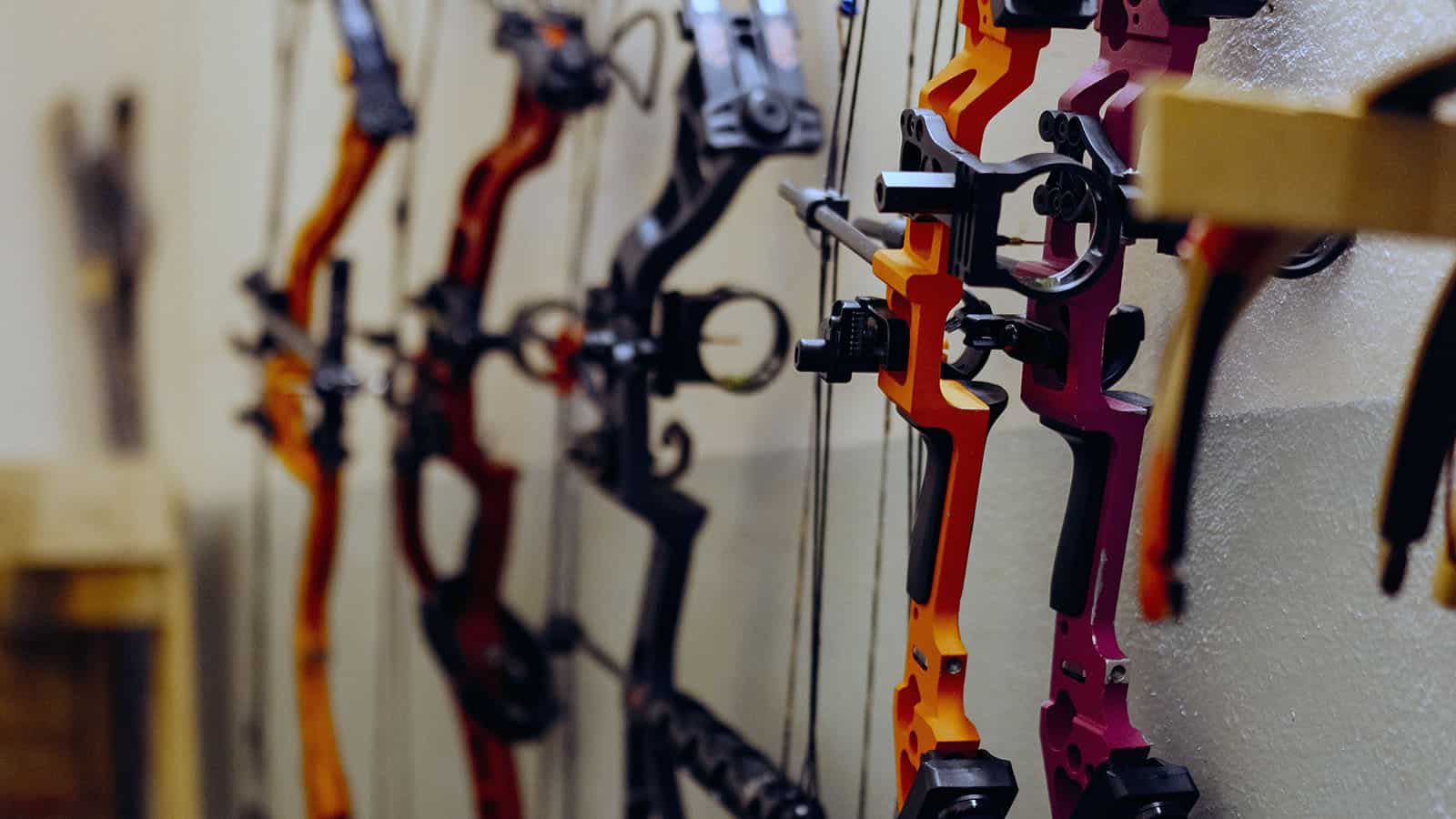
Keep in mind that both recurve bows and longbows do not have set draw lengths. They allow you to draw back more or less as far as your muscles allow. However, this is not the case for compound bows. Compound bows have set draw lengths.
This means that determining the proper length of an arrow for a compound bow isn’t quite the same as with a recurve bow. Selecting proper draw length is therefore important with a compound bow.
A Simple Arrow Length Chart
So, how long should my arrows be? To provide you with a simple answer, here we have a chart that tells you what your arrow length should be based on draw length.
| Draw Length | Arrow Length |
|---|---|
| 22” | 23” |
| 23” | 24” |
| 24” | 25” |
| 25” | 26” |
| 26” | 27” |
| 27” | 28” |
| 28” | 29” |
| 29” | 30” |
| 30” | 31” |
| 31” | 32” |
| 32” | 33” |
| 33” | 34” |
Conclusion
To determine arrow length, figure out your draw length, and then add an inch. It really couldn’t be any easier than that.
